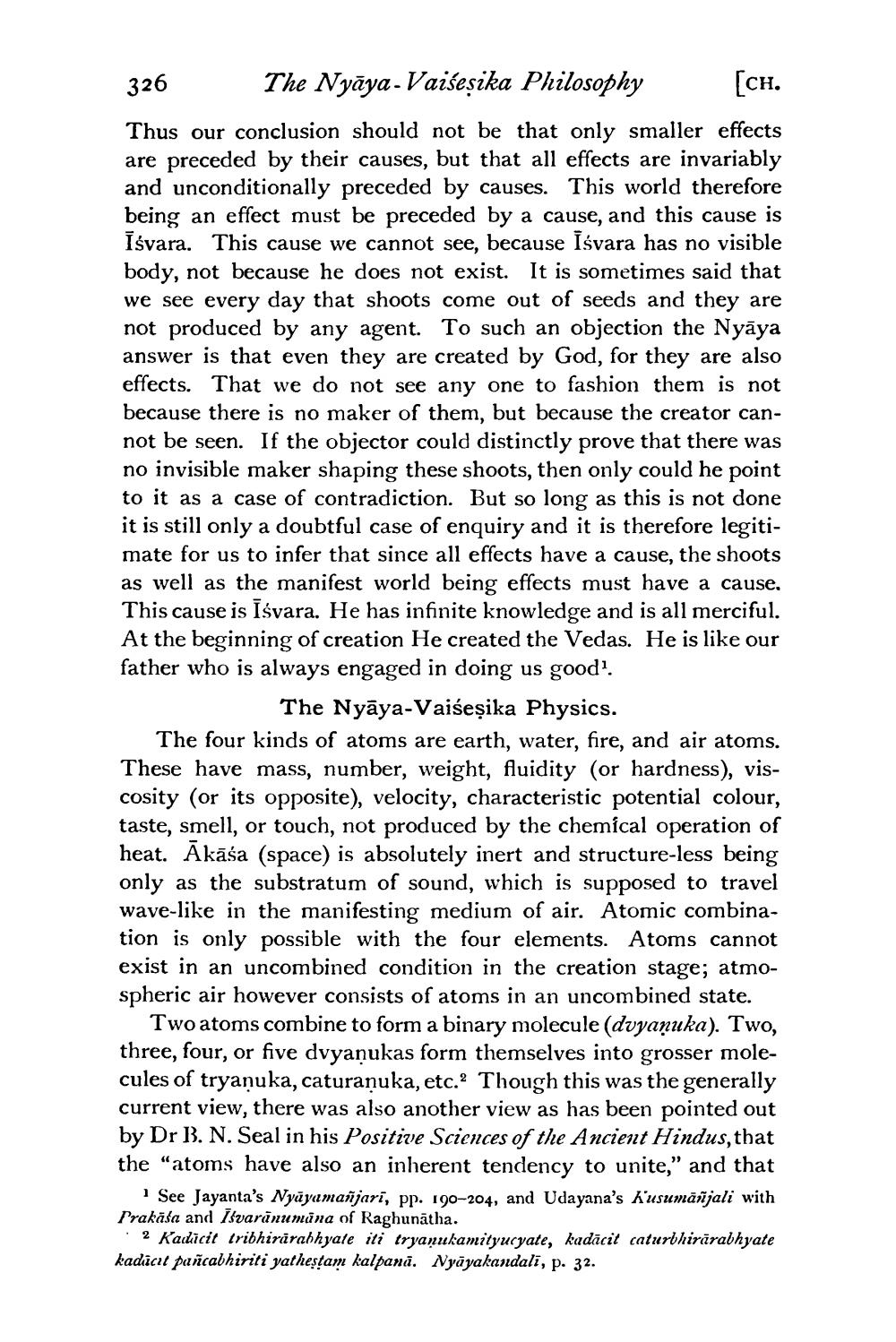________________
326 The Nyāya-Vaiseșika Philosophy [ch. Thus our conclusion should not be that only smaller effects are preceded by their causes, but that all effects are invariably and unconditionally preceded by causes. This world therefore being an effect must be preceded by a cause, and this cause is īśvara. This cause we cannot see, because Isvara has no visible body, not because he does not exist. It is sometimes said that we see every day that shoots come out of seeds and they are not produced by any agent. To such an objection the Nyāya answer is that even they are created by God, for they are also effects. That we do not see any one to fashion them is not because there is no maker of them, but because the creator cannot be seen. If the objector could distinctly prove that there was no invisible maker shaping these shoots, then only could he point to it as a case of contradiction. But so long as this is not done it is still only a doubtful case of enquiry and it is therefore legitimate for us to infer that since all effects have a cause, the shoots as well as the manifest world being effects must have a cause, This cause is īśvara. He has infinite knowledge and is all merciful. At the beginning of creation He created the Vedas. He is like our father who is always engaged in doing us good!.
The Nyāya-Vaiseșika Physics. The four kinds of atoms are earth, water, fire, and air atoms. These have mass, number, weight, fluidity (or hardness), viscosity (or its opposite), velocity, characteristic potential colour, taste, smell, or touch, not produced by the chemical operation of heat. Akāśa (space) is absolutely inert and structure-less being only as the substratum of sound, which is supposed to travel wave-like in the manifesting medium of air. Atomic combination is only possible with the four elements. Atoms cannot exist in an uncombined condition in the creation stage; atmospheric air however consists of atoms in an uncombined state.
Two atoms combine to form a binary molecule (dvyaņuka). Two, three, four, or five dvyaņukas form themselves into grosser molecules of tryanuka, caturaņuka, etc.? Though this was the generally current view, there was also another view as has been pointed out by Dr B. N. Seal in his Positive Sciences of the Ancient Hindus, that the "atoms have also an inherent tendency to unite," and that
See Jayanta's Nyāyamañjari, pp. 190-204, and Udayana's Kusumāñjali with Prakäsa and Isvarānumuna of Raghunātha.
2 Kadicit tribhirärabhyale iti tryanukamityuryate, kadācit caturbhirārabhyate kadicit pañcabhiriti yathestam kalpanā. Nyāyakandali, p. 32.




